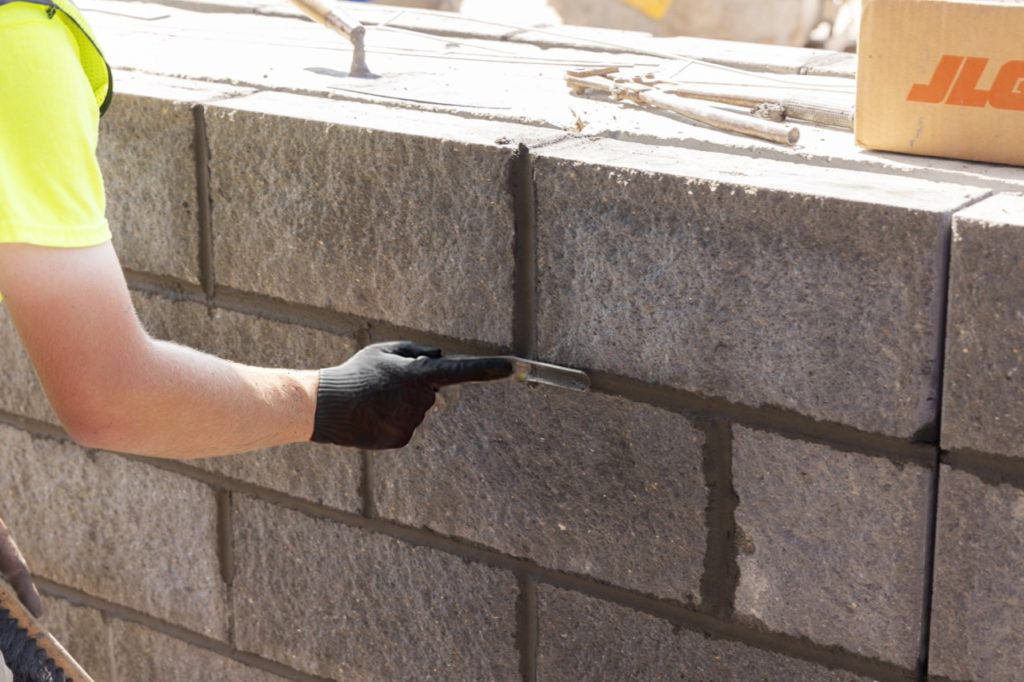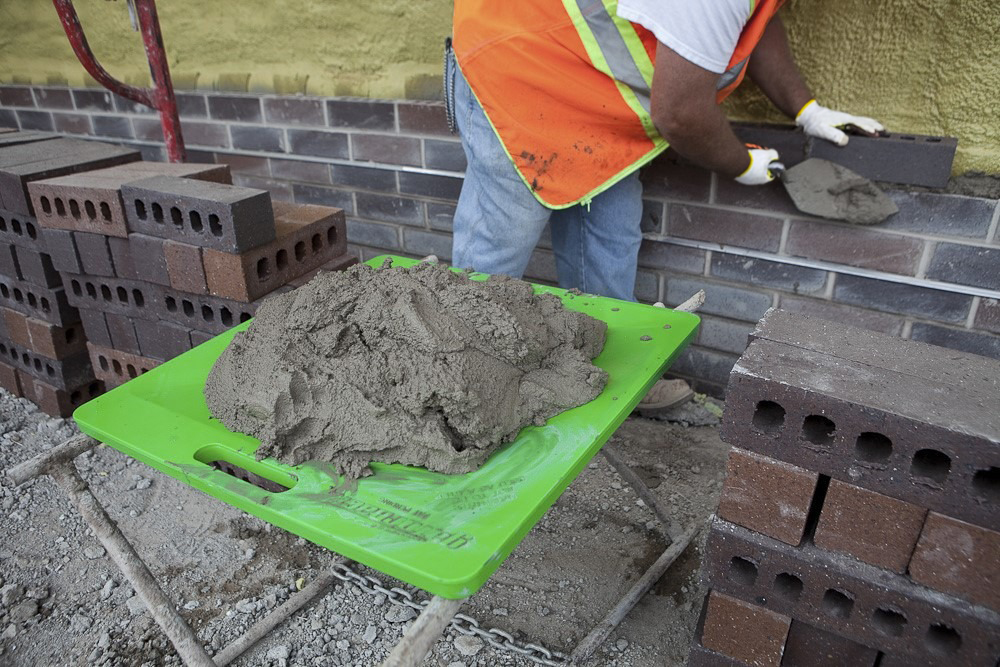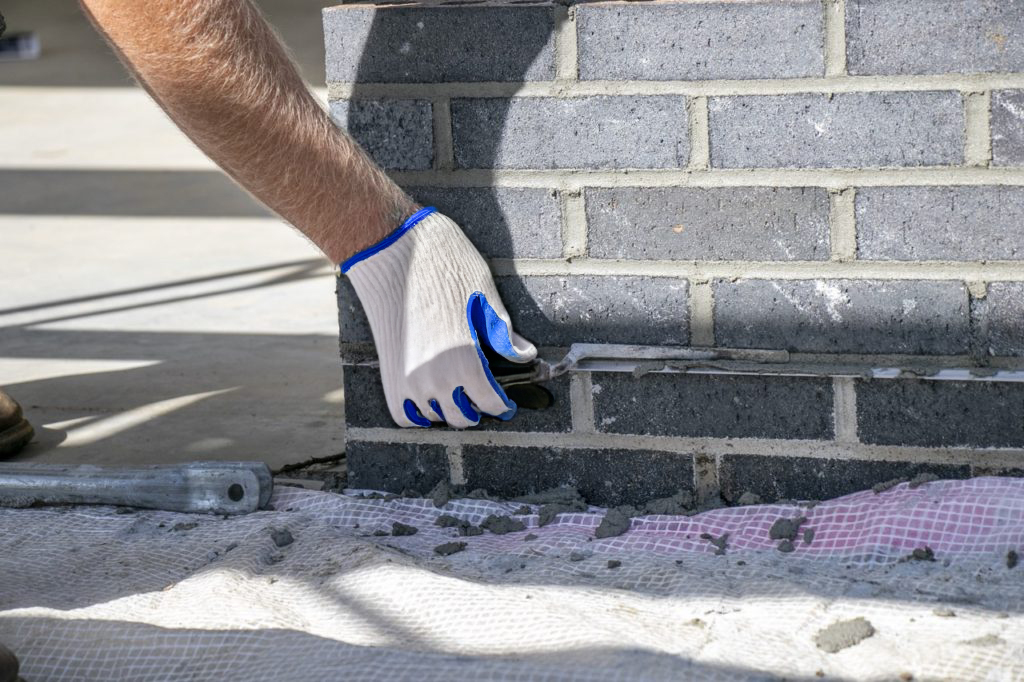Ten Masonry Must-Haves: The Essentials
Words: Mackenzie Claassen
To achieve professional-quality results when laying brick, block, or stone, it’s crucial to use the right tools for the job. In the masonry industry, there is a plethora of tools and equipment you can use, but which are the most necessary? From trowels to masonry brushes to mortar boards, here are 10 tools considered essential for the masonry jobsite, each with a specific role in ensuring precision, efficiency, and quality in your work.
1. Brick Trowel
When thinking of masonry, the brick trowel is likely the first tool that comes to mind, as it plays a crucial role in laying bricks and blocks. Brick trowels come in a variety of sizes, catering to different levels of ability and various job types. Smaller trowels are ideal for apprentices just starting out because they are easier to work with. Larger trowels are great for seasoned masons because of their ability to hold and pick up more mortar at a time, making them perfect for blockwork. Many brick trowels feature a bumper on the end of the handle used to tap bricks into place.
Using a brick trowel is an acquired skill. First, scoop up the desired amount of mortar and spread it along the row of the previously laid bricks. Next, butter the ends of the brick and position it below the string line. Adjust and set the brick by tapping it with the bumper on the trowel handle. Lastly, angle the trowel and slice upward to remove excess mortar from the face of the bricks, ensuring a clean, professional finish.
.png)
2. Margin Trowel
Another important tool for bricklayers is the margin trowel. With a slim, flat-nosed design, this trowel excels at applying and smoothing mortar in tight places where larger trowels can't reach. It’s useful for detailed work around windows, doors, and tight corners. A margin trowel is versatile enough for scraping off excess mortar, mixing small batches of mortar, and filling in gaps and cracks during repair jobs. To use a margin trowel, follow the same steps you would with a brick trowel.
3. Brick Jointer
Before the mortar sets, the joints must be tooled with a jointing tool, like a brick jointer. This tool is designed with different joint sizes on each end for variety. It smooths joints and compresses mortar into a concave or V shape, sealing the joints. This lengthens the lifespan of the joints while adding visual appeal.
You’ll know the mortar is ready for tooling when it’s “thumbprint hard,” meaning it will retain your thumbprint. To use the brick jointer, hold the handle and firmly “strike” the joint, then run the jointer along the joint to compress it, thus achieving a smooth, professional finish.

4. Mason's Line Winder w/ Mason's Line
Mason’s line is essential for brick and block work because it keeps your walls level and straight. Using it can be the difference between a professional-quality wall and one that leans and sags. You can choose from a variety of line colors and styles. Be sure to choose a nylon mason’s line so it won’t be affected by mortar or oil, is mildew-resistant, and is tough enough to withstand a beating from your trowel.
To use mason’s line, attach it to the corner posts or on the edges of the bricks at the desired height of your first course. Make sure it is taut and close to the bricks but far enough away so you can still scrape off excess mortar. Allow the line to guide you as you build the wall, moving the line up as you finish laying each course of bricks.
5. Line Blocks
Line blocks play an important role in masonry because they hold the mason’s line in place, ensuring a level structure. Line blocks hook to opposing corners of the wall and are held in place by the tension of the mason’s line. Once you’ve finished placing a course of bricks, you can quickly move the line blocks up to the next desired height and repeat the process until you’ve finished your structure. The alternatives to line blocks are line pins, twigs, or stretchers, all will keep the mason’s line taut to achieve a level surface.
6. Level
As you lay each course of bricks, it’s important to periodically check the line to make sure it’s level and plumb. An easy way to do this is to use a level. Levels come in a variety of lengths and styles that are perfect for any masonry job.
7. Mortar Board
Mortar must be kept at the right consistency to achieve a professional-quality finish. One way to ensure this is to use an advanced polymer mortar board. You’ll want to choose one that is UV-resistant for use in both hot and cold climates, impact-resistant to handle the various tools on the jobsite, and water-resistant so the moisture stays in the mortar instead of being soaked up by the board. A mortar board is essential because it allows masons to keep the mortar close at hand and is lightweight for easy transportation around the jobsite, saving time and effort.

8. Masonry Brush
A masonry brush is useful in a couple of different ways. When laying new bricks or blocks, this masonry tool is perfect for cleaning the joints, giving the brick a finished look. It’s also useful when repointing brick. You can use it to remove the excess mortar after using a joint raker, to wet the surface preparing for new mortar, or to wipe away excess mortar at the end of the job.
9. Tuck Pointer (3/8")
A tuck pointer is a tool you will want on the jobsite. It is used to maintain, repair, and enhance mortar joints, resulting in durable, aesthetically pleasing brickwork. Since the mortar joints are what hold bricks together, it’s crucial that they are cared for. When using this tool, it’s important to choose the correct size based on the size of the joints. Load up your brick trowel or masonry hawk with fresh mortar, and, holding your tuck pointer horizontally, pack the joint with the new mortar to fill in any gaps.

10. Mason's Ruler/Brick Ruler
This versatile masonry tool ensures uniform and accurate spacing of bricks. Not only does it have the basic inch measurements of a regular ruler, but it also has the brick-spacing rule to help masons mark courses when laying bricks. The measurements correspond to the height of the bricks and the mortar thickness, so you can lay bricks in straight, level courses with consistent joint sizes, resulting in a durable, level, and professional structure.
Although there are many more masonry tools that will help you yield professional results, these 10 will help you get started. By including them in your toolbox, you can work confidently each step of the way, from laying the first brick to making those final touches.